Meet the new Toyota Yaris, the latest version of our popular supermini. It’s an exciting moment in Toyota’s history, where the fourth generation of our innovative supermini meets fourth-generation hybrid powertrain technology. This opportunity delivers a car that meets the demands of urban life yet is engaging to drive on the open road.
The new Yaris also offers the comfort, space, equipment and connectivity that today’s discerning customers require. We believe the all-new Yaris is the smartest, most efficient, dynamic and stylish supermini we’ve ever produced.
Introducing the all-new Toyota Yaris
Chief engineer Yasunori Suezawa had a clear vision of what the new Yaris needed to deliver at a time of radical change in the motor industry. He said: “We reconsidered the values required of a compact vehicle as we moved into the next generation. The essentials are fuel economy, safety, spaciousness, usability and performance. But we must also deliver enjoyable driving to each and every customer – a quality we express in the new Yaris theme of Ready to Go.”
The development programme gathered skilled people from our planning, design, production engineering and manufacturing divisions into a group that became known internally as The Compact Car Company. Their collective ambition was to apply the Toyota New Global Architecture (TNGA) platform philosophy to a small car and introduce a new variation that will underpin a series of new models.
Known internally as GA-B, this new TNGA platform is central to the improved dynamic performance of the all-new Yaris, giving a lower centre of gravity and much greater body rigidity. Its layout also freed the designers to create a more distinctive and athletic-looking car with an appealing new interpretation of the Yaris identity.
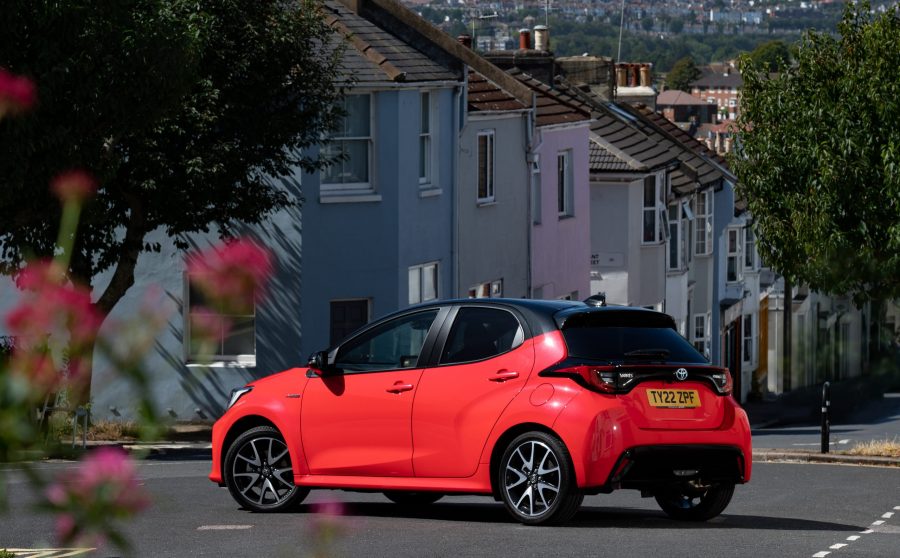
The new model uses the latest evolution of our renowned hybrid electric powertrain, which offers even-better fuel economy, lower emissions and the ability to operate in zero-emission and zero-anxiety EV mode at much higher speeds and over longer distances.
Reinforcing its reputation as a segment leader in safety, the new Yaris again raises the standard. As well as being the first Toyota to be equipped with central airbags, the model benefits from a greater range of Toyota Safety Sense systems. These include a Pre-Collision System that can detect pedestrians even at night and a segment-first Intersection Turn Assistance system that warns the driver of collision risks at road junctions.
New Toyota Yaris: Design
In terms of design and packaging, the Toyota Yaris has always stayed true to the Big Small ethos that inspired the first-generation model. However, for this all-new, fourth-generation car, our development team devised the parallel, but still closely related, strategy of Condensed and Agile. This ethos was designed to help the engineers focus on creating a car that was right-sized for urban areas yet full of energy and dynamism.
Chief engineer Yasunori Suezawa explains: “I wanted the styling to capture the stance of an athlete on the starting blocks. You can see this in the rear wings and the car’s new proportions – wider, lower and more compact – giving the impression of condensed power.”
Design: Exterior
In contrast to many B-segment rivals that have grown significantly in their latest generations, the all-new Yaris is slightly shorter than the outgoing model and the overall height has been reduced. It will be the most compact vehicle in its class, but by increasing the width, wheelbase and wheel track, cabin space and comfort have been significantly improved.
The new GA-B platform gave our designers more freedom to produce an eye-catching aesthetic that emphasised the individual identity of the new Yaris. Its wider stance, shorter overhangs and strong character lines amplify the visual effect of the condensed proportions, projecting a sense of forward motion. Bulging front and rear wings add to the sense of tensioned muscles, expressing the car’s agility and ready-to-go character.
The front elevation focuses on the large grille and central Toyota emblem. The new headlights feature LED technology (subject to grade) and include indicators that alternate with the daytime running lights. The light units also extend towards the front wheels in a styling feature that reduces the perceived length of the front overhang. In contrast, the bonnet appears longer than before and the A-pillars have been moved rearward to improve the driver’s forward view. The wheels come in either 16- or 17-inch diameters, with the former offering a tight, 5.2m turning radius.
Design: Interior and packaging
The interior of the all-new Yaris is full of high-quality, sensory-rich materials that you might expect from cars in the class above. It also follows a less is more concept designed to help the driver keep their eyes on the road and their hands on the wheel.
“We worked on two main elements to achieve this,” explained Suezawa. “First we maximised visibility by setting the instrument panel lower and pulling the A-pillar further back. The front seats were also moved outwards so there is more space between the driver and passenger. Second, we wanted to let the driver take in the flow of information with minimal eye movement, so we are offering a large colour head-up display.”
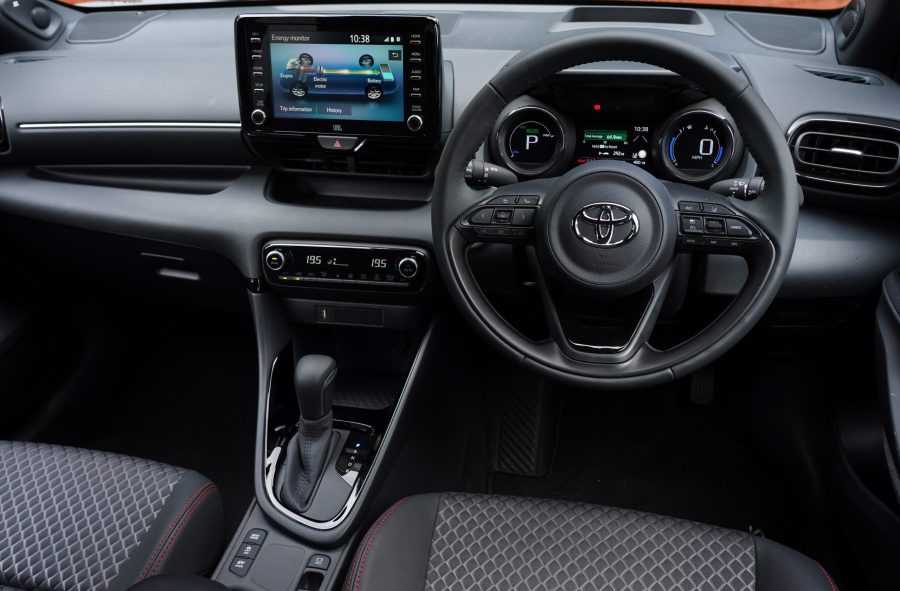
The driver’s greater sense of control and connection with the car is enhanced by their position at the wheel. The front seats have been mounted 60mm further back and the hip point has been lowered by 21mm, both of which contribute to the car’s improved weight balance and a more engaging driving position. The multi-function steering wheel also has a smaller diameter and offers an extended range of reach adjustment.
Driver distraction is minimised through a ‘binocular’ meter arrangement within the instrument binnacle, which flanks a TFT multi-information display on Design grade models and above. An eight-inch central touchscreen is positioned close at hand, while an optional ten-inch colour head-up display (standard on the Launch Edition model) ensures that vital information ‘floats’ within the driver’s line of sight.
New Toyota Yaris: Hybrid powertrain
Our leadership in hybrid electric technology is built on more than 20 years, 15 million sales and half a billion kilometres of experience. The Toyota Yaris was the first to introduce hybrid power to the small car market, and now the all-new, fourth-generation Yaris builds on that reputation with a new, fourth-generation hybrid powertrain.
Hybrid powertrain: Fourth-generation system
In the development of this high-tech new powertrain, the engineering team focused on the dual qualities of efficiency and driver enjoyment, with tuning and calibration to suit European roads. This is explained to us in the video below by hybrid expert Keisuke Morisaki, a senior manager at Toyota Motor Europe.
Data underlines the extent of the team’s technical achievements. For example, overall efficiency has increased by 22%, a figure that would traditionally come at the expense of performance. Yet total system output is actually 16% greater at 114bhp, the 0-62mph time of 9.7 seconds represents a 15% improvement, and overtaking performance from 50 to 70mph has been cut by two seconds. CO2 emissions have dropped to 92g/km and the combined fuel economy figure is from 68.9mpg (WLTP cycle).
But one of the most immediately noticeable advancements is that the car’s all-electric EV capabilities have been transformed. It is now possible to drive in EV mode for much longer periods in urban traffic, and even maintain speeds of up to 80mph without assistance from the petrol engine. This endows the all-new Yaris with many of the benefits of a battery-electric vehicle but at a lower price and no range anxiety.
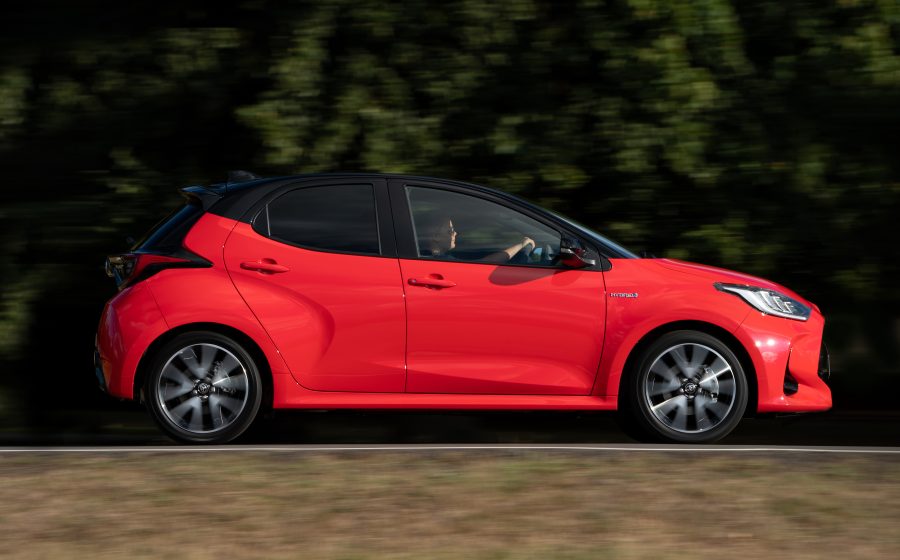
Let’s now examine how each of the principal components in the hybrid system contributes to the new model’s enhanced efficiency and drivability.
Hybrid powertrain: M15A-FXE 1.5-litre hybrid engine
The all-new 1.5-litre hybrid engine (known internally by its M15A-FXE codename) is directly derived from the same TNGA engine family as the 2.0-litre unit employed in the Corolla and Toyota C-HR. It features a three-cylinder configuration, long piston stroke, 14:1 compression ratio and super-fast combustion with optimal temperature and pressure control. This contributes to its exceptionally high thermal efficiency of 40%, which ensures that more of the energy potential from each drop of fuel is captured.
In common with all Toyota hybrid engines, the new M15A-FXE runs on the Atkinson combustion cycle, which keeps the intake valves open for longer in order to delay the compression stroke and improve efficiency. It offers a maximum output of 90bhp at 5,500rpm and peak torque of 120Nm at just 3,600rpm.
Hybrid powertrain: Hybrid transaxle
The hybrid transaxle has been completely redesigned, adopting a new dual-axis structure that has reduced its size by 9.0%. This means that the two electric motor/generator units located within the transaxle now sit on their own shaft instead of being placed one behind the other. These motor/generators are known as MG1 and MG2.
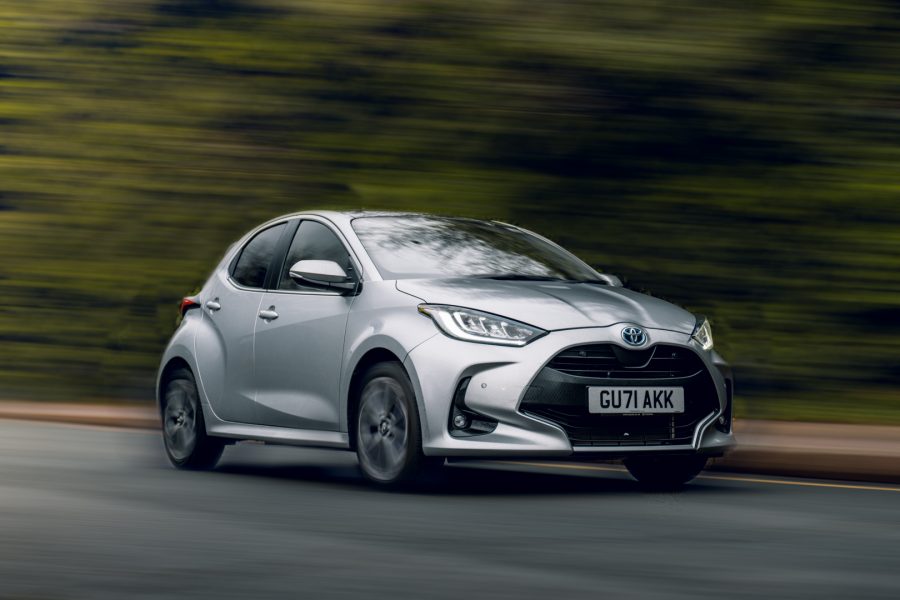
MG1 starts the engine and generates power to charge both the hybrid battery and the 12V auxiliary battery. MG2, on the other hand, is the larger unit and is used to drive the vehicle through the front wheels. Benefitting from new segment-type coils on the stator, MG2 can deliver 59kW of power and 141Nm of torque at a maximum of 17,000rpm.
The transaxle also has a new ring gear-driven oil pump, which provides lubrication for both the gears and motor/generator units.
Hybrid powertrain: Lithium-ion hybrid battery
The all-new Yaris adopts a lithium-ion hybrid battery that is not only more powerful but smaller and 12kg lighter than the nickel-metal hydride battery of the outgoing model. Voltage has risen from 144 to 177.6V although the number of cells has been reduced from 120 to 48. Current flow has also been significantly improved: output has increased by 50% while input, such as energy regeneration through the brakes, is 100% faster. Compact dimensions allow the battery to be located beneath the rear passenger seat so that luggage space is not compromised.
Hybrid powertrain: Power control unit
Often referred to as the PCU, this high-capacity power control unit is used to boost the voltage coming from the hybrid battery and convert it from direct to alternating current. The PCU uses transistor control for this inversion, and the efficiency of these transistors is optimised by arranging them vertically so they are cooled on both sides. More accurate heat control allows a higher frequency of current switching – up to 10,000 times a second – which makes a significant contribution to the system’s efficiency and transfer of power to the motor.
Hybrid powertrain: Power split device
This device is the heart of the hybrid system, governing the interaction between the aforementioned components. It enables the new Yaris to operate as a parallel hybrid with MG2 powering the car alone, or in combination with the hybrid petrol engine.
New Toyota Yaris: Driving dynamics
The all-new Yaris is the first model to be built on the Toyota New Global Architecture (TNGA) GA-B platform for small cars. This modular base provides the foundation for radically improved driving dynamics and natural, confidence-inspiring agility.
“I wanted to transform the driving dynamics of Yaris,” commented chief engineer Yasunori Suezawa, “delivering [a car] that is smooth, accurate and agile, contributing to the fun of driving. It is the TNGA chassis that has made this all possible.”
Around town, it offers agile handling, with a turning radius as tight as 5.2 metres and a crisp steering response. These qualities make the new Yaris easy to manoeuvre and park on busy urban streets, while on fast-flowing roads performance is smooth and relaxing with excellent straight-line stability.
Driving dynamics: High-rigidity body
The GA-B platform is 37% stiffer than the chassis and drivetrain of the outgoing Yaris, which now elevates the new car to best-in-class levels of rigidity. This, in turn, contributes to improved safety, superior handling and responsiveness, greater ride comfort, and lower NVH levels.
This rigidity has been achieved through a series of body reinforcements, a stiffer front bulkhead, and more extensive use of spot welds and bonding adhesive in the car’s construction. Specific areas of strength are highlighted in dark blue in the pictures of the exposed chassis. These include the longitudinal beams that connect directly to the bumper reinforcements, and how the high-strength area at top of the shock absorber now serves as the upper steering pivot.
Further rigidity has been created by a new ring structure between the bulkhead and dashboard, while in the middle of the car there are reinforcements to the tunnel and rear structure, creating another robust ring structure. At the rear, gussets have been added to the inner wheel arches and rear pillars.
Driving dynamics: Low centre of gravity
All new TNGA-based Toyota models have a low centre of gravity for improved inertia characteristics and high-speed cornering stability. The all-new Yaris, of course, is no exception, with a balance point around 12mm lower than that of the outgoing model.
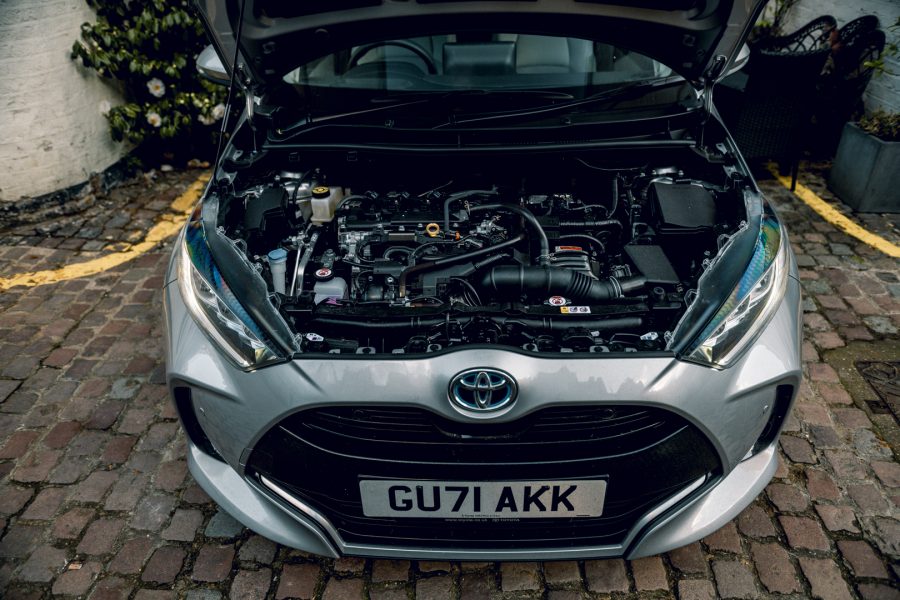
This reduction has been achieved by ensuring that heavier components are located as low as possible, prime examples of which are the 40mm lower roofline and lower-set seats. Meanwhile, careful positioning of components within the wheelbase has improved the weight balance from front to rear and left to right, which also contributes to reduced body roll and improved braking performance.
Driving dynamics: Suspension
The fourth-generation Yaris has an all-new suspension arrangement, with the front MacPherson struts set at a revised angle and operating with reduced friction, resulting in less vibration. The rear torsion beam is now 80% stiffer than before in order to reduce body roll when cornering, but this increase has allowed softer springs to be employed to improve ride comfort.
Driving dynamics: Reduced noise and vibration
The GA-B platform architecture and upper body are designed to reduce the amount of noise entering the cabin. The engineers pinpointed areas where the most noise intrudes – the dashboard and door panels, in particular – and adjusted their design to filter out unwanted external sound. Extensive body sealing further isolates the cabin and keeps noise at bay.
Safety and equipment
The all-new Yaris takes small car safety to an unprecedented level and has been equipped to be the safest model in its segment. Key strengths include a significant increase in body rigidity and a two-generation leap forward in Toyota Safety Sense systems. In addition, a number of new features are making their Toyota debut, reaffirming our commitment to ensuring the highest safety provisions are as widely available as possible.
Watch the video above as safety expert Tom Rycken, a manager at Toyota Europe, explains some of the challenges involved in making a small car a safe car.
New Toyota Yaris: Safety features
Building the all-new Yaris on the GA-B platform has increased the car’s torsional rigidity to a class-best standard. This added strength provides better impact absorption and helps to maintain the integrity of the passenger cabin in the event of a collision. But if an accident did occur, the Yaris is the first Toyota to be equipped with central airbags. These are programmed to deploy in the event of a side impact to help prevent the driver and front-seat passenger from colliding with each other.
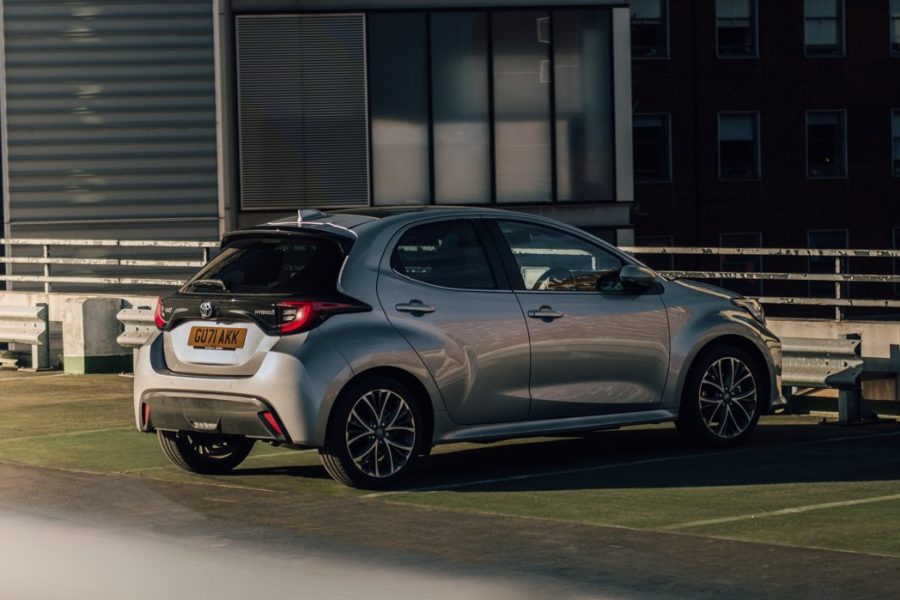
The new Yaris is also equipped with some of the most advanced driver assistance systems. There are not only more features in its Toyota Safety Sense package than any other Toyota model, but more electronic safety features than any other B-segment competitor. Some of the highlights of this package are listed below:
- Pre-Collision System: This integrated camera and radar set-up can detect and warn the driver about pedestrians and cyclists in the path of the car
- Intersection Turn Assistance: this system detects potential hazards approaching the car at junctions and can apply automatic emergency braking to avoid a potential collision
- Adaptive Cruise Control: when activated, this maintains a safe distance from the preceding vehicle and will bring the Yaris to a halt if that vehicle stops
- Lane Departure Alert with Steering Control and Lane Trace Assist: these systems warn the driver if they are veering off a safe path and can also be set to automatically centre the Yaris in its lane or follow the path of the vehicle ahead if road markings are undetectable
- Emergency Steering Assist: this system provides additional steering torque if it is necessary for the driver to swerve to avoid a pedestrian or obstacle in the car’s traffic lane, yet it also supports the driver by maintaining vehicle stability
- Rear Cross-Traffic Alert and Blind Spot Monitor: these systems detect potential impact hazards during reversing manoeuvres and will alert the driver to vehicles approaching from behind on the road
- Intelligent Clearance Sonar with automatic braking: ultrasonic sensors at the rear of the car will detect an object that is about to be hit, and will automatically apply the brakes if the driver fails to react to audible warnings
New Toyota Yaris: Equipment features
The all-new Yaris is generously equipped and features specifications that are more commonly found in cars from the class above. For example, it is the only car in its class to offer the option of a ten-inch colour head-up display, which allows the driver to project key information such as vehicle speed, safety warnings, navigation support and multimedia information onto the base of the windscreen.
Wireless smartphone integration comes via Apple CarPlay and Android Auto, and it is possible to specify an eight-speaker JBL premium audio system and ambient blue cabin lighting. Connected services can also be reached using the MyToyota app.
If you want any more information about the new Toyota Yaris then please feel free to drop us a message in the comments section below.
NB: Details were correct at the time and date of publication


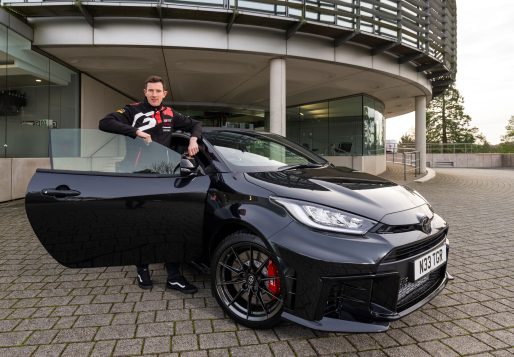
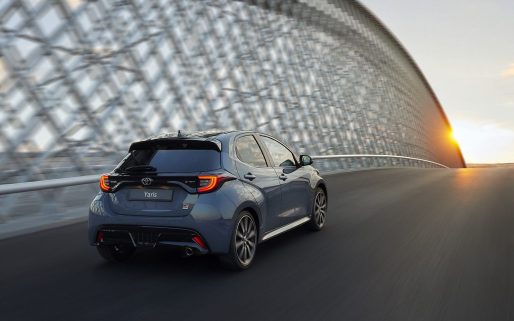

I have a Toyota Yaris icon, 73 plate base level. I cant seem to access the tyre pressure check on the in car screen. I have done as instructed in the owners manual, ie switche on power, selected hoe on the screen but can’t locate an icon to select vehicle. Am I missing out some step?
Hi Alan, thanks for getting in contact.
We are sorry to hear you have been experiencing these issues.
Your Toyota Centre are best placed to advise on this. You can locate your closest centre here:
https://www.toyota.co.uk/find-a-dealer
Please let us know if you have any further questions.
Thanks.
This is the outgoing model………
manufacture magazine outdated.
want details of new model, has the battery changed on 2024 design spec ?
Hi Ian
No, there has not been a battery change.
Kind regards